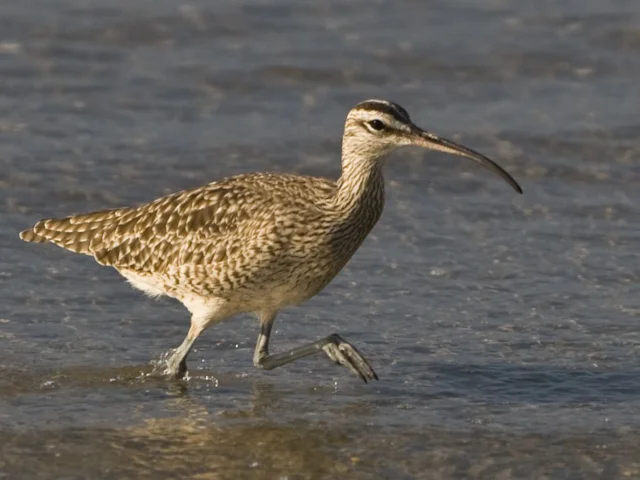Bay of Panama saved
511ac107-0d82-46d1-9f5d-ad9260f4d652

One of the most important sites for migratory waterbirds in the Americas has been saved from development by a legal review of its status.
The Bay of Panama, a RAMSAR site, was had its legal protected status withdrawn by the Panama government in May 2012, due to pressure for urban and resort development, including hotels and golf courses. At the same time, regulations on mangrove cutting were also relaxed, and developers were almost immediately reported to be at work within the protected area's boundary.
The Bay of Panama is one of the five most important stopover and wintering areas for migratory shorebirds in the entire Americas, holding more than 30 per of the global population of Western Sandpiper and a substantial percentage of the global population of Hudsonian Whimbrel. Its extensive mangrove forests play a vital role in supporting fisheries, filtering pollutants in urban and agricultural runoff, and protecting Panama City from floods. The mangroves and wetlands of Panama Bay are also vital to other globally threatened wildlife including Jaguar, Tapir, Spider Monkey, American Crocodile and Loggerhead Turtle.
Panama Supreme Court has now issued the long-awaited final decision on the site. The ruling on the legality of the administrative decision that created the wetland protected area, basically means there will now be a reprieve from destructive development. The Supreme Court has reinstated the protected status for the Bay of Panama wetlands, removing the temporary suspension it had placed on the protected area a year ago.
“Good use of environmental law and scientific studies, and the help of our local and international partners have influenced the final decision of the court”, said Rosabel Miró, Executive Director of Panama Audubon Society, the country’s BirdLife Partner. “This court ruling will certainly help us to effect the proper implementation of environmental laws in other protected areas of the country that currently face threats similar to the Bay of Panama."
“Panama Audubon Society spearheaded the public outcry against this decision, and working with local and international partners, successfully organised environmental, trade, business and community groups to collectively voice the importance of conserving the Bay's wetlands”, said Dr Hazella Shokellu Thompson, BirdLife’s Director for Partnership, Capacity and Communities.
The Bay of Panama, a RAMSAR site, was had its legal protected status withdrawn by the Panama government in May 2012, due to pressure for urban and resort development, including hotels and golf courses. At the same time, regulations on mangrove cutting were also relaxed, and developers were almost immediately reported to be at work within the protected area's boundary.
The Bay of Panama is one of the five most important stopover and wintering areas for migratory shorebirds in the entire Americas, holding more than 30 per of the global population of Western Sandpiper and a substantial percentage of the global population of Hudsonian Whimbrel. Its extensive mangrove forests play a vital role in supporting fisheries, filtering pollutants in urban and agricultural runoff, and protecting Panama City from floods. The mangroves and wetlands of Panama Bay are also vital to other globally threatened wildlife including Jaguar, Tapir, Spider Monkey, American Crocodile and Loggerhead Turtle.
Panama Supreme Court has now issued the long-awaited final decision on the site. The ruling on the legality of the administrative decision that created the wetland protected area, basically means there will now be a reprieve from destructive development. The Supreme Court has reinstated the protected status for the Bay of Panama wetlands, removing the temporary suspension it had placed on the protected area a year ago.
“Good use of environmental law and scientific studies, and the help of our local and international partners have influenced the final decision of the court”, said Rosabel Miró, Executive Director of Panama Audubon Society, the country’s BirdLife Partner. “This court ruling will certainly help us to effect the proper implementation of environmental laws in other protected areas of the country that currently face threats similar to the Bay of Panama."
“Panama Audubon Society spearheaded the public outcry against this decision, and working with local and international partners, successfully organised environmental, trade, business and community groups to collectively voice the importance of conserving the Bay's wetlands”, said Dr Hazella Shokellu Thompson, BirdLife’s Director for Partnership, Capacity and Communities.

